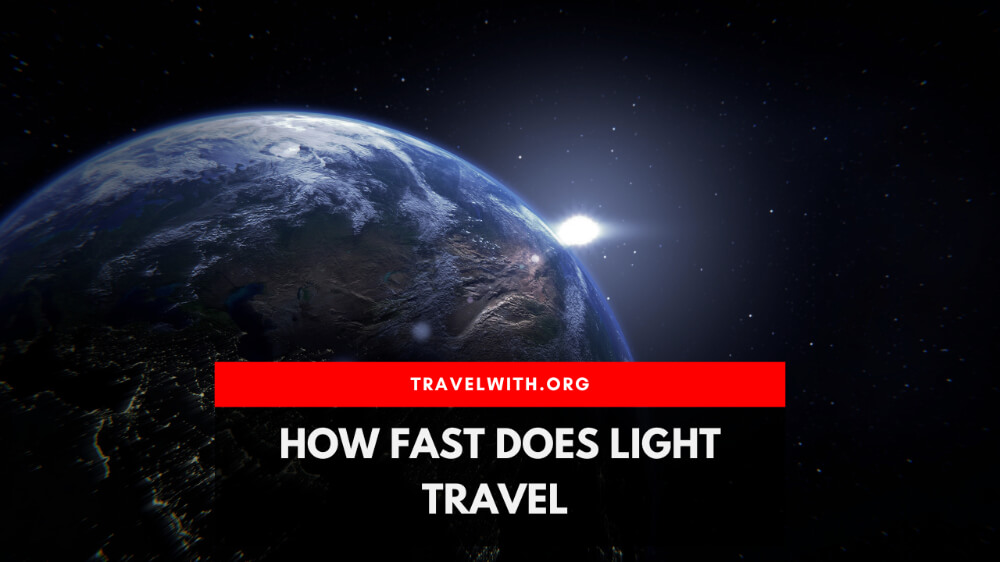Contents
Speed of Light
The speed of light, a fundamental constant of the universe, has fascinated humans for centuries. As we take a closer look at this phenomenon, we delve into the details of the incredible finite speed that light travels, clocking in at an impressive 186,000 miles per second or approximately 300,000 kilometers per second.
In a Vacuum
In a vacuum where there are no particles to slow it down, the speed of light soars to its maximum. This universally agreed-upon value is exactly 299,792 kilometers per second or about 186,282 miles per second. This speed is so immense that light can circumnavigate the earth about 7.5 times in a single second!
In Different Mediums
However, the speed of light varies when it travels through different mediums. For instance, when light travels through water or glass, it slows down due to interactions with the molecules of these mediums. Renowned physicist Christiaan Huygens was among the pioneers to recognize this change in the speed of light depending on the medium it moves through.
Impact of Speed of Light
The speed of light is an interesting physical quantity and a key player in our understanding of the universe.
On-Time and Space
In his special theory of relativity, Albert Einstein unveiled the profound connection between space and time, tethered by the speed of light. He proposed that the speed of light is constant for all observers, no matter their state of motion. This seemingly counterintuitive principle leads to mind-bending implications like time dilation and length contraction.
Cosmological Implications
The finite speed of light also has tremendous cosmological implications. When we gaze at distant stars or galaxies, we’re essentially peering billions of years into the past. For instance, light from our nearest star, Proxima Centauri, takes about 4.24 years to reach us, while light from the moon Io, one of Jupiter’s largest moons, takes only about 1.3 seconds to reach Earth, credit NASA’s comprehensive data.
Measuring the Speed of Light
Over centuries, various methods have been employed to measure this breathtaking speed.
Historical Methods
Historically, one of the first significant experiments was conducted by Danish astronomer Ole Rømer in 1676, who observed the eclipses of Jupiter’s moon Io. By carefully noting the discrepancies in timing, he concluded that light moved with a finite speed.
Modern Techniques
Modern techniques, however, have provided more accurate measurements. Utilizing devices like lasers and highly sensitive detectors, scientists are now able to measure the speed of light with remarkable precision.
Practical Applications
The speed of light has several practical applications that we benefit from in our daily lives.
Optical Communications
In optical communications, the finite speed of light is utilized for rapid data transmission. The information is encoded in a beam of light and transmitted across fiber-optic cables. These systems allow data to be transferred almost instantaneously across vast distances.
Global Positioning Systems
Global Positioning Systems (GPS) also rely on the speed of light. The time it takes for a signal to travel from the satellite to a GPS receiver can be translated into a precise distance calculation, allowing for accurate location tracking.
Advanced Physics Experiments
Advanced physics experiments, including those at particle accelerators, often involve measuring and manipulating particles moving at speeds close to that of light.
Challenges and Limitations
While the speed of light underpins much of modern physics, it also presents limitations.
Faster-Than-Light Phenomena
Despite popular science fiction themes, nothing is known to travel faster than light in our current understanding of physics.
This limitation poses significant challenges for interstellar travel, as even at the speed of light, it would take over four years to reach Proxima Centauri, the nearest star to our solar system.
Implications for Interstellar Travel
However, physicists haven’t given up on the possibility of faster-than-light travel. They’re probing the boundaries of our understanding, exploring concepts like wormholes and warp drives, which could, in theory, allow us to travel vast distances in the blink of an eye.
Frequently Asked Questions
1. What’s the speed of light in a vacuum?
The speed of light in a vacuum is approximately 186,282 miles per second or 299,792 kilometers per second.
2. How does the speed of light compare to sound?
The speed of light is significantly faster than the speed of sound. In fact, light travels approximately 874,030 times faster than sound in air.
3. What is the distance of a light-year?
A light-year is the distance that light travels in a year, roughly 5.88 trillion miles or about 9.46 trillion kilometers.
4. How does the medium change light’s speed?
Light slows down when it travels through a medium other than a vacuum, such as water or glass. This is due to interactions between the light and the particles of the medium.
5. Can anything travel faster than light?
As per our current understanding of physics, based on Einstein’s Theory of Relativity, nothing can travel faster than the speed of light.
6. What is the formula to calculate the speed of light?
The speed of light is a constant and doesn’t need calculation. However, it’s represented by ‘c’ in equations, particularly in E=mc^2, Einstein’s mass-energy equivalence formula.
As we continue exploring the universe and pushing the boundaries of our understanding, the speed of light remains a key player in our journey. Its speed, effects, and applications permeate our lives, shaping everything from the technology we use to our fundamental understanding of reality. The speed of light, while a limit in many ways, remains an open door to the universe’s myriad wonders.

